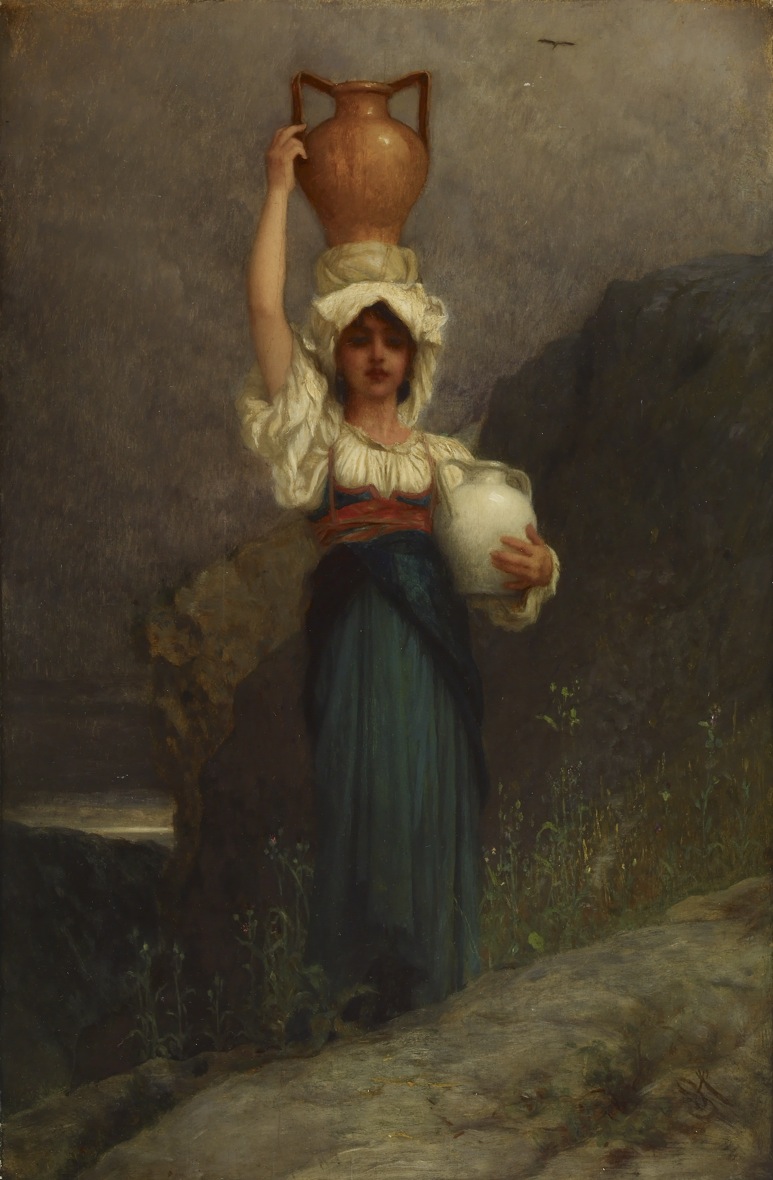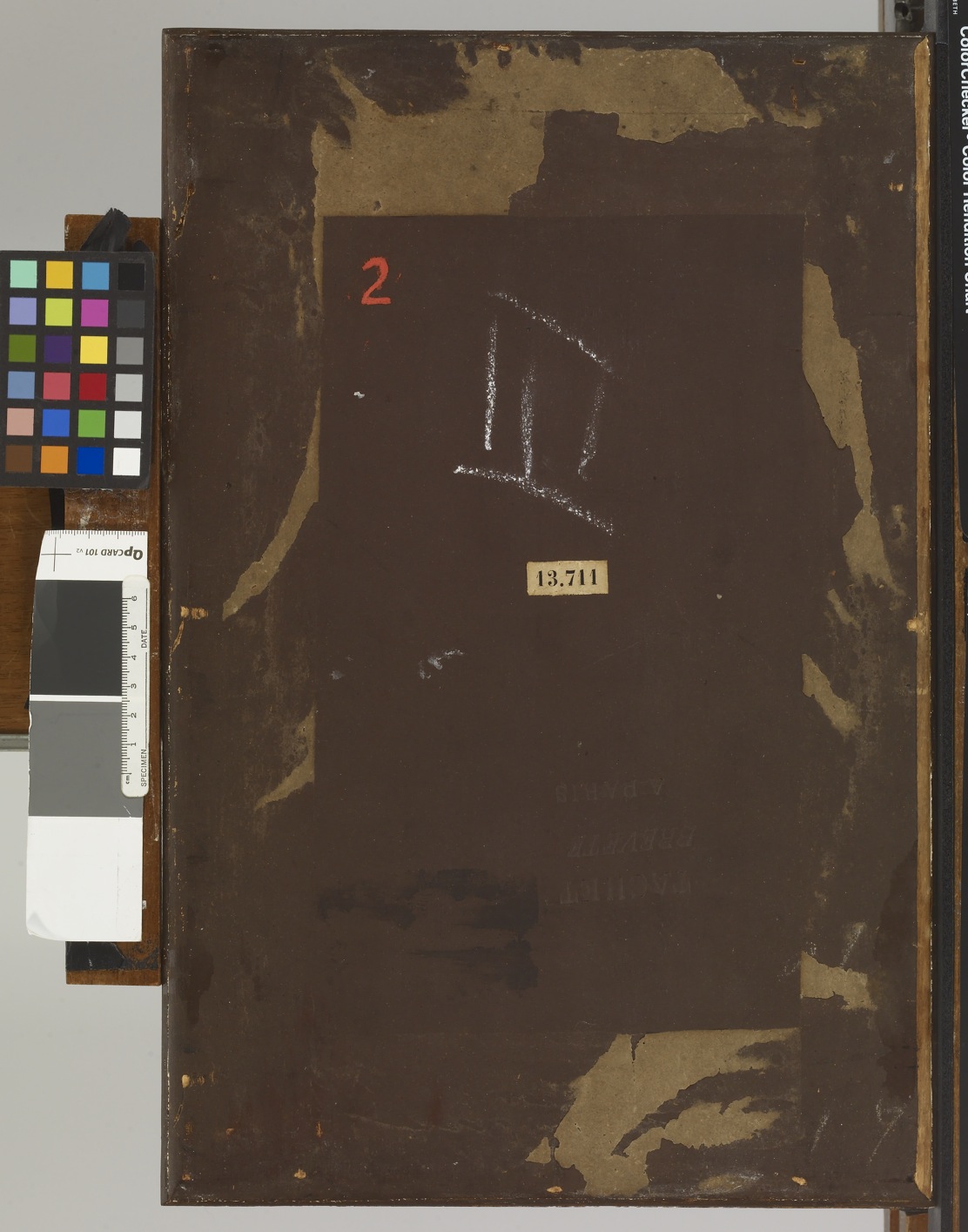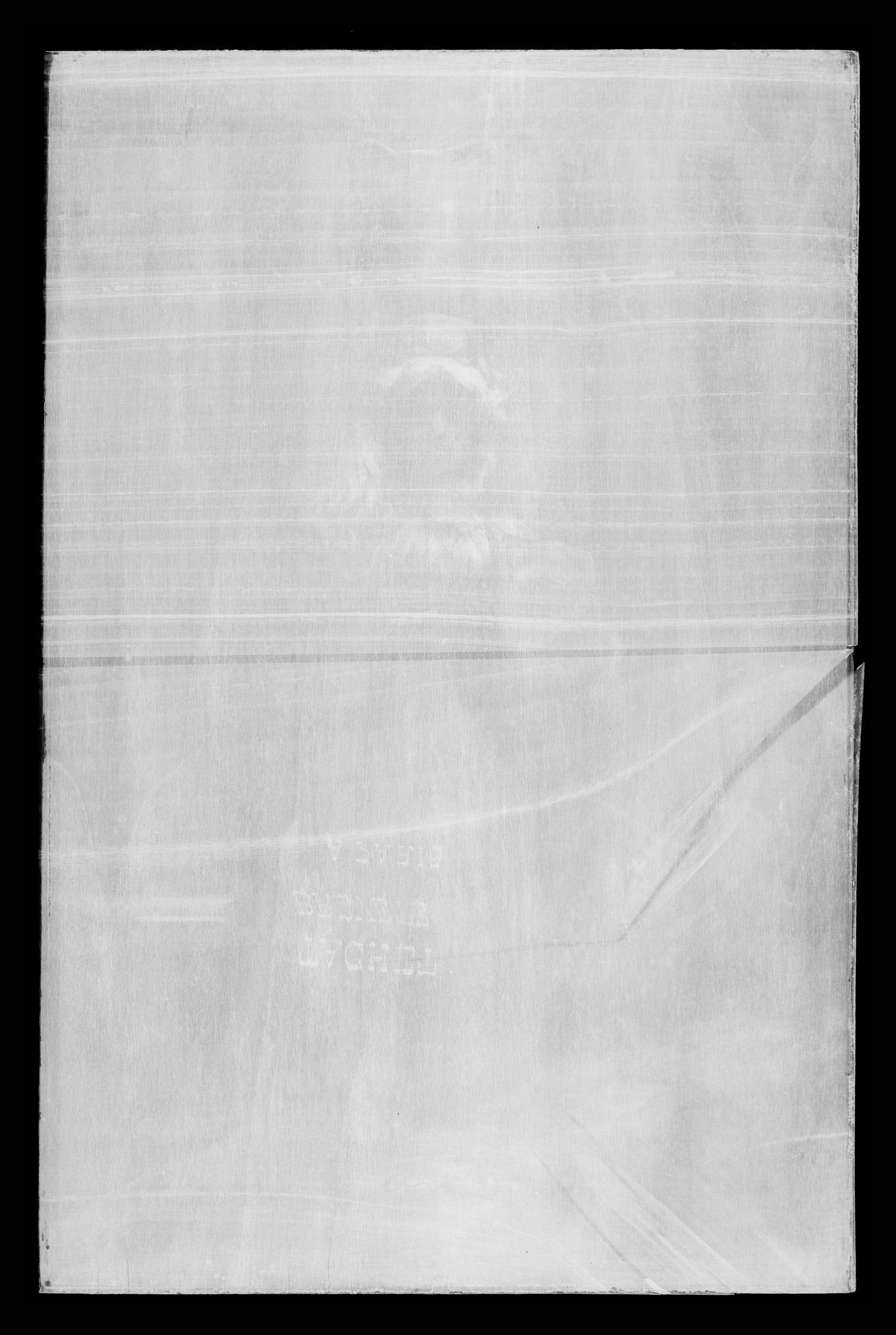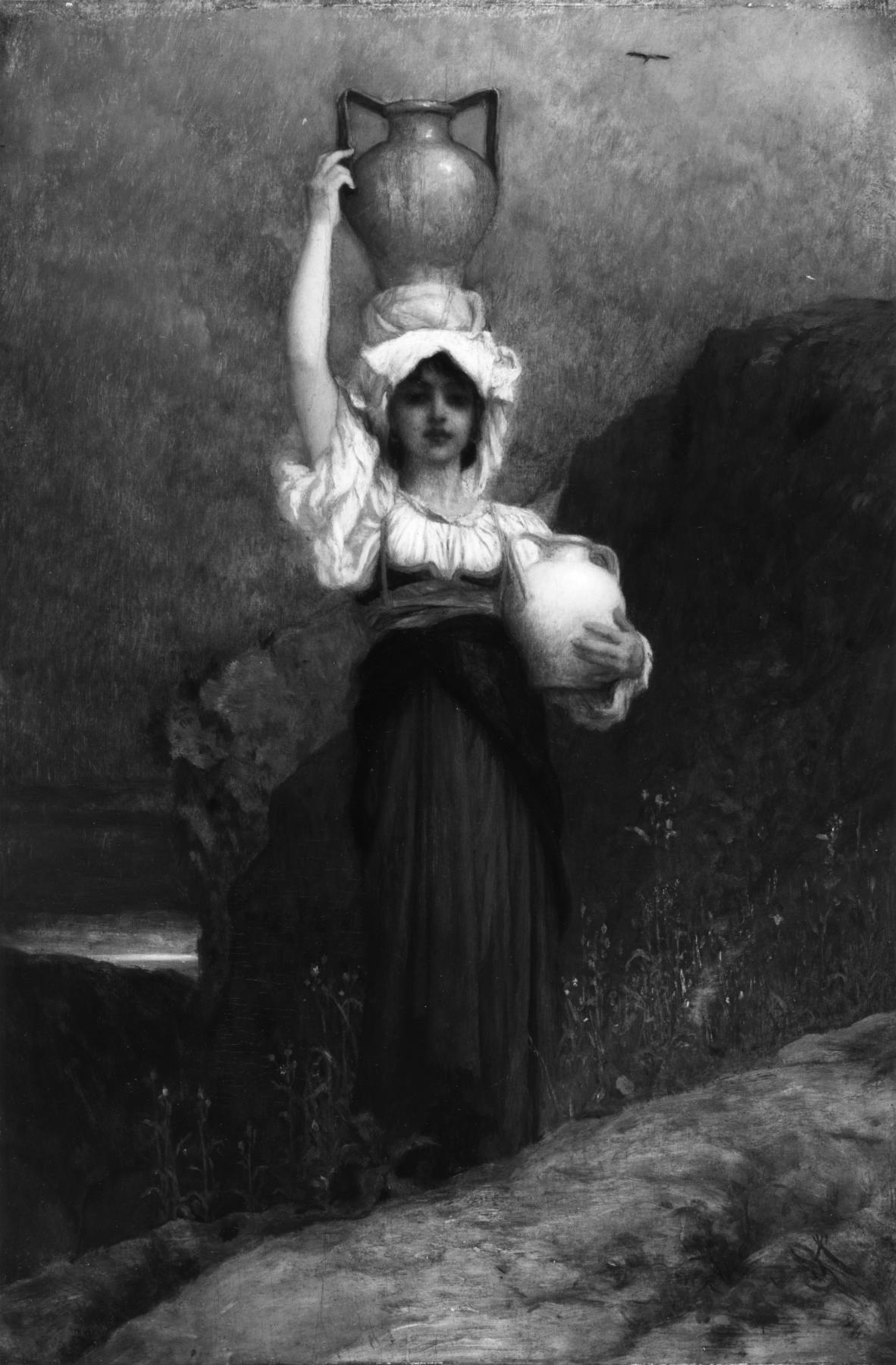Returning from the Well
(18th and 19th Centuries )
The artist Hébert worked in the classical tradition, and painted Italian genre scenes, religious subjects, and portraits.
A young peasant girl ascends a hil carrying a water jug on her head and another on her left hip. The sun is setting on the low horizon, and since it is twilight, the colors are muted. In an engraving of this painting entitled "The Water Bearer", by J. Levasseur, published by D. Appleton and Co., New York, the flowers are disposed differently at the girl's feet and it does not have the lone bird in the sky.
Inscription
Provenance
Provenance (from the French provenir, 'to come from/forth') is the chronology of the ownership, custody, or location of a historical object. Learn more about provenance at the Walters.
Purchased by Goupil et Cie (from artist), Paris, on December 25 1858 or early in 1861 [1]; purchased by François Petit, Paris, on March 10 1860 or April 1861. William T. Walters, Baltimore, between 1878 and 1884 [mode of acquisition unknown]; by inheritance, Henry Walters, Baltimore, 1894; by bequest, Walters Art Museum, 1931.
[1] Goupil et Cie Stockbook 1, Stock no. 885, Page 97, Row 6 or Goupil et Cie Stockbook 2, Stock no. 111, Page 13, Row 3.
Exhibitions
| 2014-2016 | From Rye to Raphael: The Walters Story. The Walters Art Museum, Baltimore. |
Conservation
| Date | Description | Narrative |
|---|---|---|
| 11/23/1966 | Examination | examined for condition |
| 8/14/1980 | Examination | examined for condition |
| 9/24/1980 | Treatment | other; mounted; coated; loss compensation |
Measurements
H: 16 x W: 10 1/2 in. (40.7 x 26.7 cm); Framed H: 28 1/16 × W: 22 11/16 × D: 4 5/16 in. (71.2 × 57.6 × 11 cm)
Credit Line
Acquired by William T. Walters, between 1878 and 1884
Location in Museum
Not on view
Accession Number
In libraries, galleries, museums, and archives, an accession number is a unique identifier assigned to each object in the collection.
In libraries, galleries, museums, and archives, an accession number is a unique identifier assigned to each object in the collection.
37.2









